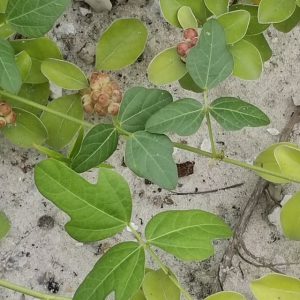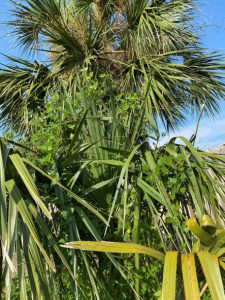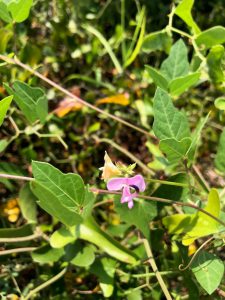
We must be doing a decent job at getting the word out about invasive plant species, because as soon as unusual things start blooming, we get calls. My colleague Rick O’Connor has been especially proactive about informing people of the invasive beach vitex, so he is often alerted when vines of all sorts start showing up. Longer warm seasons and fewer hard freezes due to changes in climate will continue to bring an increase in both native and invasive vine species, which can affect the ecological makeup of our existing ecosystems.
A couple of weeks ago, we started getting photos from curious beach residents about a light green vine that was popping up in landscapes and wild areas. With three-leaved clusters, there was concern about poison ivy—but once its delicate pink/purple flowers bloomed, clientele were worried it might be beach vitex.

The plant in question is actually a native that must really love the hot, humid days of late summer. Once I noticed one, I started spotting them blooming everywhere. Also known as annual sand bean (hence its growth on Pensacola Beach), the trailing fuzzybean (Strophostyles helvola) is a legume native to eastern Canada and the United States. According to over 3,000 citizen science posts on the smartphone field app iNaturalist, the vine is at peak bloom in late August/early September, after which it falls off rapidly by the end of October.

Pea flowers have a characteristic shape, opening like a trumpet but with a defined “keel” that curves out. The turfgrass alternative perennial peanut has a very similar flower, only in yellow. The fuzzybean vine does indeed produce a fuzzy bean—it looks like a green bean and is covered in small hairs. The beans can float, allowing for dispersal through water bodies. Trailing fuzzybean is a pollinator plant and attracts bees, butterflies, and birds.
 0
0
